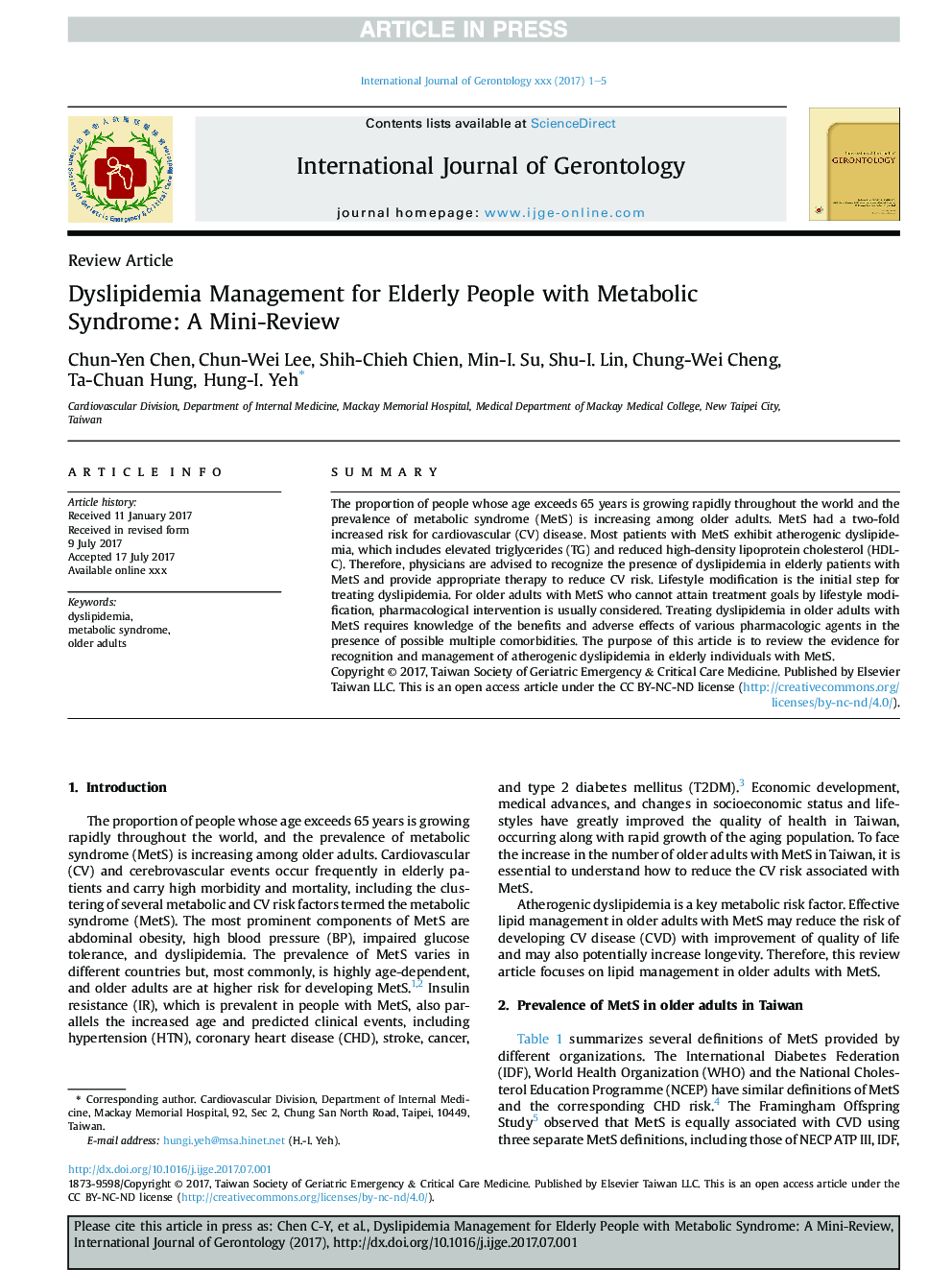| Article ID | Journal | Published Year | Pages | File Type |
|---|---|---|---|---|
| 8732560 | International Journal of Gerontology | 2018 | 5 Pages |
Abstract
The proportion of people whose age exceeds 65 years is growing rapidly throughout the world and the prevalence of metabolic syndrome (MetS) is increasing among older adults. MetS had a two-fold increased risk for cardiovascular (CV) disease. Most patients with MetS exhibit atherogenic dyslipidemia, which includes elevated triglycerides (TG) and reduced high-density lipoprotein cholesterol (HDL-C). Therefore, physicians are advised to recognize the presence of dyslipidemia in elderly patients with MetS and provide appropriate therapy to reduce CV risk. Lifestyle modification is the initial step for treating dyslipidemia. For older adults with MetS who cannot attain treatment goals by lifestyle modification, pharmacological intervention is usually considered. Treating dyslipidemia in older adults with MetS requires knowledge of the benefits and adverse effects of various pharmacologic agents in the presence of possible multiple comorbidities. The purpose of this article is to review the evidence for recognition and management of atherogenic dyslipidemia in elderly individuals with MetS.
Related Topics
Health Sciences
Medicine and Dentistry
Geriatrics and Gerontology
Authors
Chun-Yen Chen, Chun-Wei Lee, Shih-Chieh Chien, Min-I. Su, Shu-I. Lin, Chung-Wei Cheng, Ta-Chuan Hung, Hung-I. Yeh,
